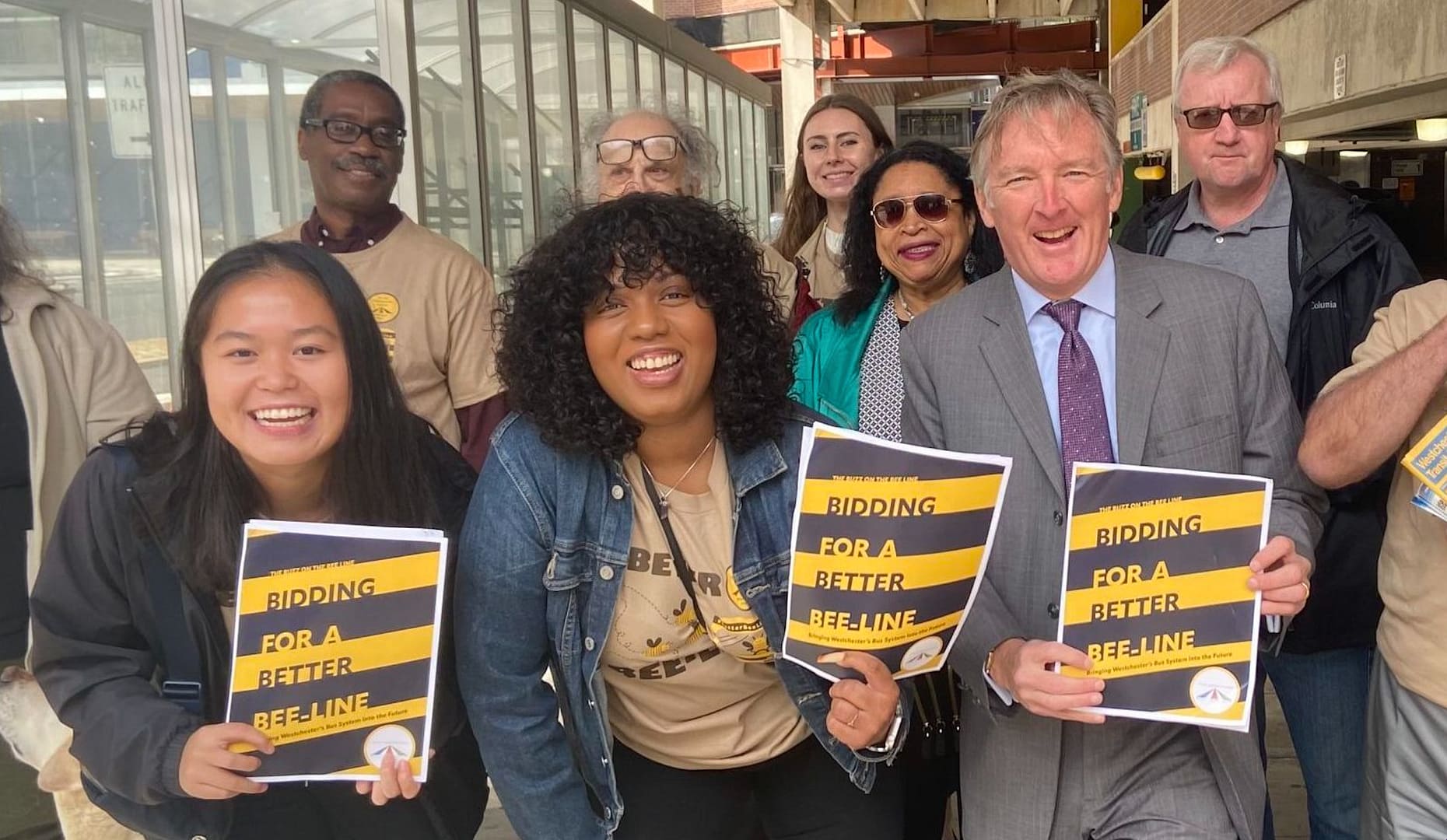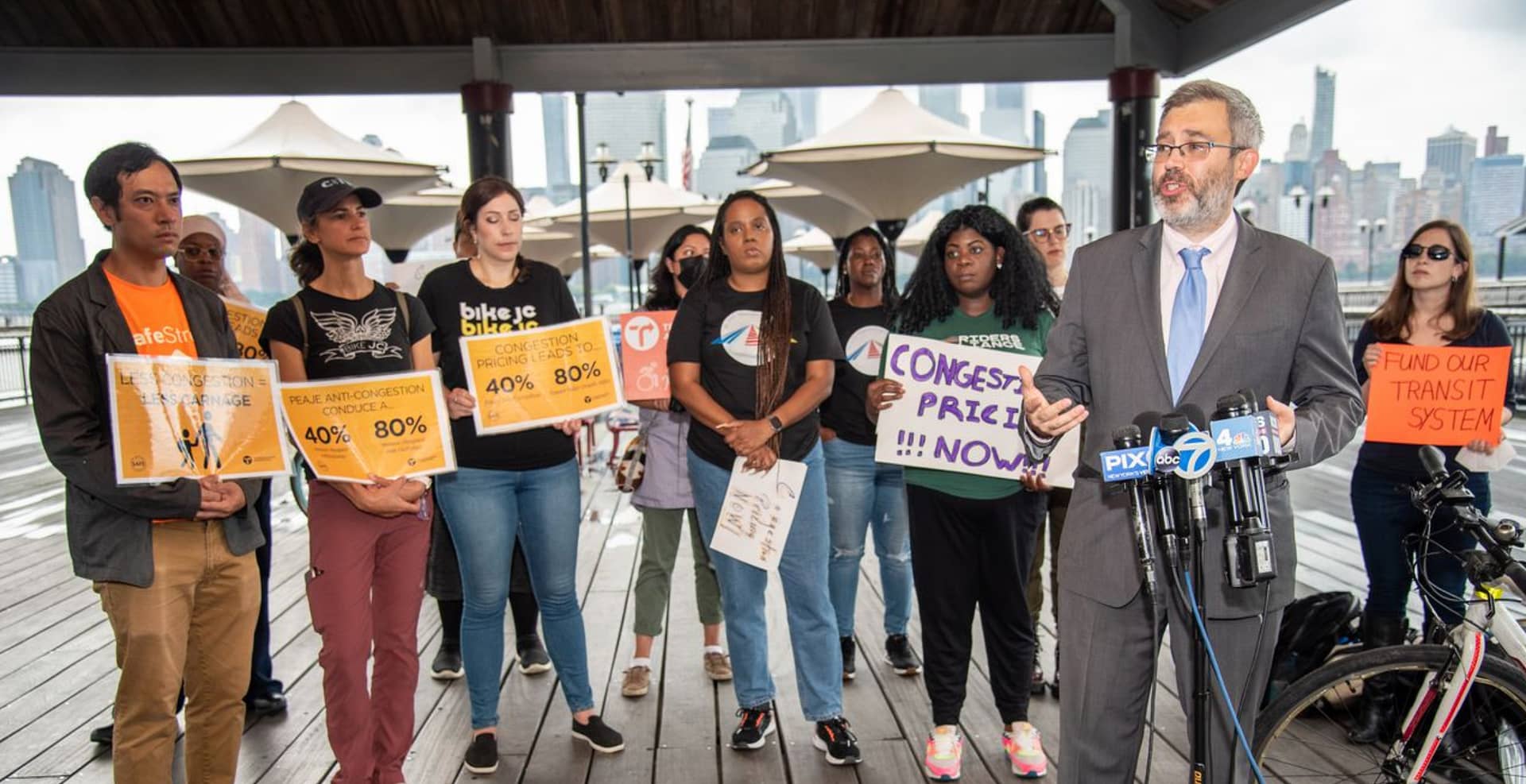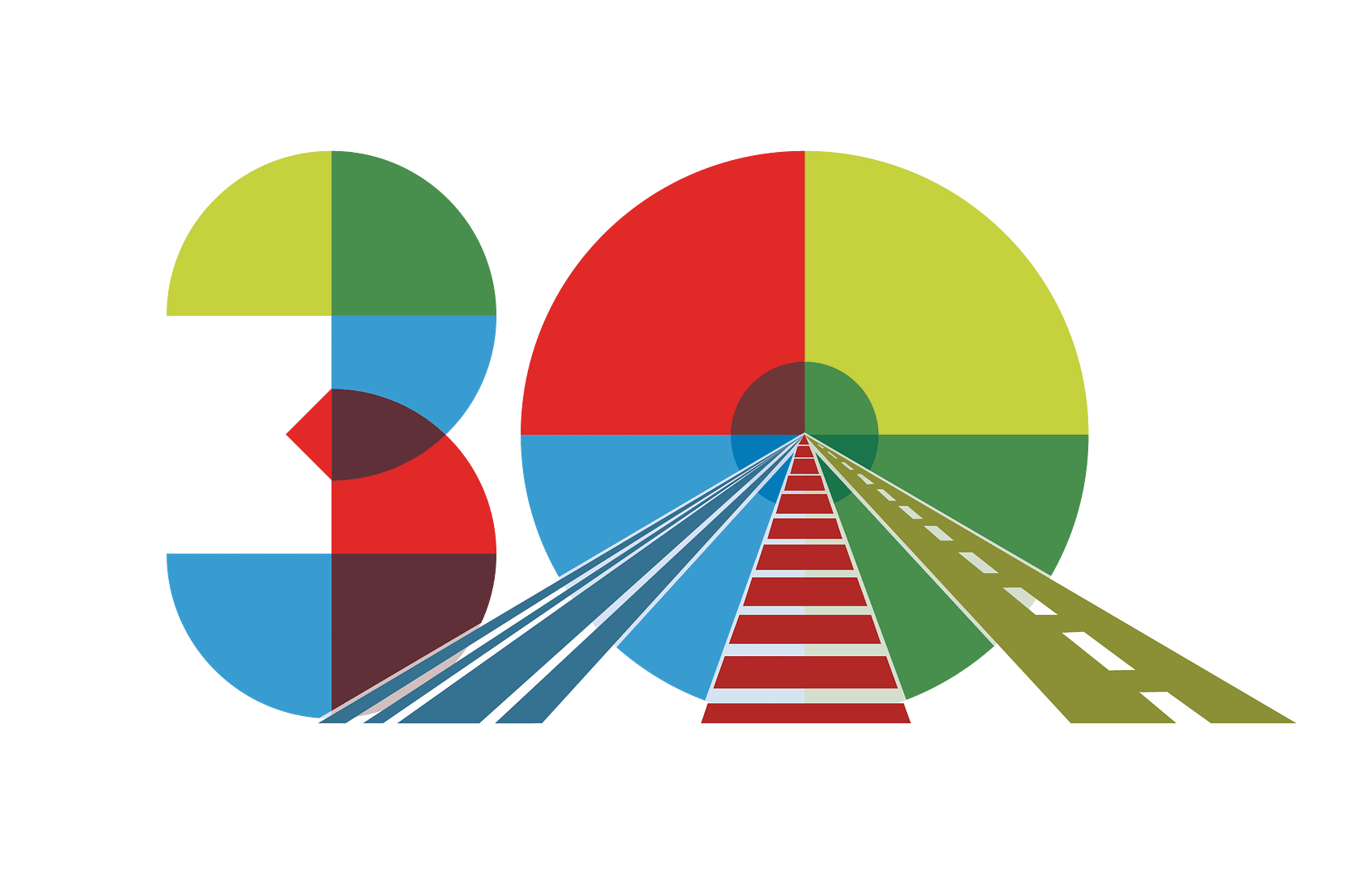Our Work
Tri-State Transportation Campaign has four main priorities: Improving & expanding transit, meeting the region’s climate goals, preventing traffic deaths, and making transportation equitable. Learn more about the campaigns we’re working on.

Over ten million New York, New Jersey and Connecticut residents rely on public transit as part of their daily commutes—and yet, the Metropolitan Transportation Authority and New Jersey Transit suffer from lack of funding from state and federal legislators and lack of accountability to riders. Through our work fighting for congestion pricing in New York and our Fix NJ Transit campaign in New Jersey, we’re fighting for more funding for public transit so trains and buses are fast, frequent, and reliable. And through our work on New York City’s Bus Turnaround campaign and our efforts to fund replacements for the damaged tunnels under the Hudson River Project and the aging Port Authority Bus Terminal, we’re calling for fixes to the critical transit infrastructure and systems commuters rely on every single day.

Transportation is now the leading contributor to greenhouse gases in the United States. Founded by a network of environmental groups in 1993, TSTC is at the center of efforts to reduce transportation carbon emissions by encouraging more commuters to use multi-modal transit and by fighting to make public transit emission-free. TSTC is playing a key role in the effort to bring electric buses to the region’s transportation networks and encourage our cities to prepare for the future of private electric vehicles. At the same time, we’re ensuring through our congestion pricing and Fix NJ Transit campaigns that riders can rely on public transit to get around—and can leave their cars behind. And whether through our work to encourage bike and pedestrian safety in New Jersey through Families for Safe Streets and our Complete Streets policies, or our efforts to develop the Circuit Trails network in South Jersey, we’re ensuring residents can choose other transportation options in their local communities as well.

While municipalities are moving toward safer streets models, the transition isn’t happening quickly enough: New Jersey faced near-record highs for pedestrian fatalities in 2017, and despite New York City’s Vision Zero program, the city’s streets can still be a dangerous place for bikers and walkers. Meanwhile, suburban and rural pedestrian and bike fatalities continue to plague communities throughout New York and Connecticut. From our work fighting for complete streets models to ensure roads are built for everyone to our leadership on Families for Safe Streets New Jersey, we’re making roads safer—no matter what your mode of transit is. And our work on autonomous vehicle deployment and regulation is all about ensuring a safer future for personal transportation. We know even one preventable traffic death is a tragedy. Through policies and technology that protect lives, we’re working toward the day when traffic fatalities are a thing of the past.

Mobility is opportunity. Everyone should have the ability to get to good jobs and affordable housing, and public transit must reach into communities of color and low-income communities in order to make sure all our residents can achieve their dreams. Tri-State Transportation Campaign’s work to ensure the Sheridan Expressway redesign is fair to all local neighborhoods will correct a longstanding inequity. Our work on New York City’s Bus Turnaround campaign is all about increasing access to good transit in every neighborhood, while our work to transition to electric buses will help reduce pollution’s impact in our most vulnerable communities. And our fight to fund public transit in New York and New Jersey through congestion pricing and Fix NJ Transit will ensure that when people need it, public transit is there. Access to public transportation should be a right, which is why we’re fighting every day to make sure that turnstiles and bus stops are gateways to opportunities for everyone.
